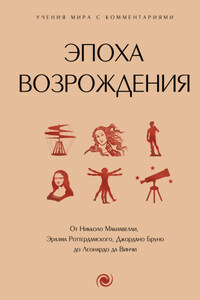Diptych, 8th century. Elephant ivory, 34.3 × 10.7 cm. From the Beauvais Cathedral treasure. Musée de Cluny, Paris.
In discussing furniture, we must begin by defining the value of the word according to the various periods to which it is applied. In its literal and general meaning, furniture represents everything that is moveable, transportable, and easy to put away.
In the early ages of our history, man was, to a certain extent, nomadic. If the necessity of defence caused castles and fortresses to be erected, fitted for repelling a hostile incursion, and for protecting the humble dwellings which gathered around them, lords and vassals, rich and poor, providing against a victorious invasion, or the necessity of going to fight in distant parts for their country’s cause, held themselves prepared to pack up, in chests kept ready for the purpose, all of their possessions. These chests are, therefore, the first and most ancient furniture.
By degrees, as public security increased, and society, growing more condensed, found support in its legal organisation, ease began to develop. Along with this came luxury, the innate want of intelligent races who require the satisfaction of the eye in proportion to the enlightenment of the mind. Strictly speaking, therefore, it was not until after the strife of the Middle Ages that furniture, such as we understand it today, could have existed. That is, an assemblage of objects placed in the principal divisions of the habitation to satisfy various requirements, and at the same time present an agreeable, elegant and even splendid appearance.
It is difficult, therefore, in the present day to compose a truly historical set of furniture, even by seeking its elements in the periods closest to us. Customs, habits, needs, and wants have changed; ancient pieces have been destroyed in mass quantities, and even when they are discovered, these pieces offer an incomplete match in regard to comfort as a modern invention but an absolute necessity in every luxurious dwelling.
Some people have, it is true, conceived the idea of transforming old furniture so as to adapt it to present exigencies; this is a barbaric concept, against which all sensible men will protest. Let us respect the waifs of the past, and beware of touching them with sacrilegious hands. It is only thus that valuable relics can retain their prestige, and add lustre to the galleries of their fortunate possessors.
Nor do we accept the compromise adopted by some, which consists in completing a furniture characteristic of a particular period with modern imitations. Few people would be deceived by it, and a false specimen introduced into a collection confuses visitors, and makes them doubt the authenticity of the entire collection.
Let us now glance rapidly at the periods whence a connoisseur may seek, with some chance of success, various parts of a choice set of furniture.
In the 14th century, Charles V and Jeanne of Bourbon had collected at the Louvre and in their chateaux countless marvels, of which a detailed inventory has preserved us a description of the contents. It was absolutely necessary that the flats should be suitable in order to contain these treasures. Indeed, contemporary writings prove the admiration impressed upon and shared with their guests by Holy Roman Emperor Charles IV and his son Wenceslas, King of the Romans, when they came to Paris in 1378. They even felt great pleasure, writers say, in receiving magnificent jewels from the king, “such as they are known to do in Paris.”
The 15th century offered nothing to add to this luxury. At most one could ask for items with which to furnish an oratory or study, that is to say chairs, benches, desks, kneelers, bookshelves and cabinets, etc.
In the 16th century, furniture that may be applied to our current uses becomes more common. The necessity of easy transport still exists and everything must be made with the option of disassembly; beds have their columns and other parts jointed, tables are on trestles or made to fold down on their axis, cabinets are numerous and varied in materials and dimensions so that being filled with valuables they may be easily stored in the chests or trunks, chairs have hooks, fastenings or can be folded. In a word, the camp furniture is ready to be packed together with the ornamental cushions, carpets and moveable hangings that they attached wherever the dwelling-place of the moment was located.
At the end of the century, furniture becomes still more abundant, and already the more cumbrous pieces cease to travel; at the moment of leaving the chateau such pieces are consigned to the garrets or the wardrobe rooms, where they remain until the day of return. At this period, a taste for the sights becomes more common; distant voyages procure objects from India, caskets painted in the Turkish fashion, oriental carpets and porcelain from China, which was easily obtainable in Cairo. It is easy to realise in the present day what kind of riches a palace of 1589 might contain;








